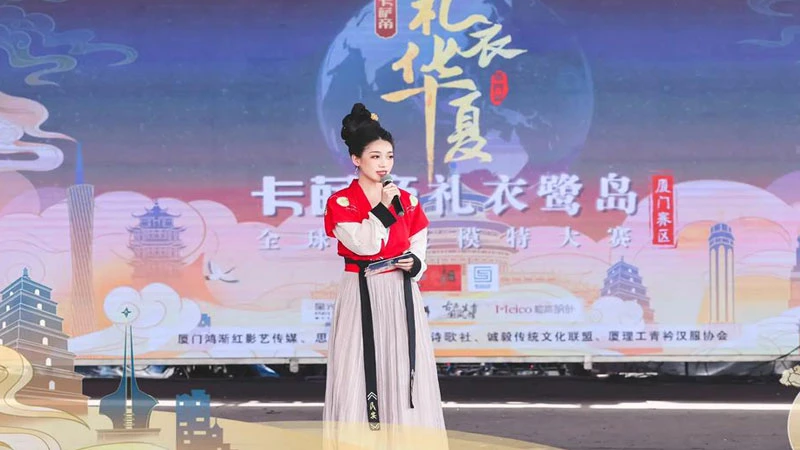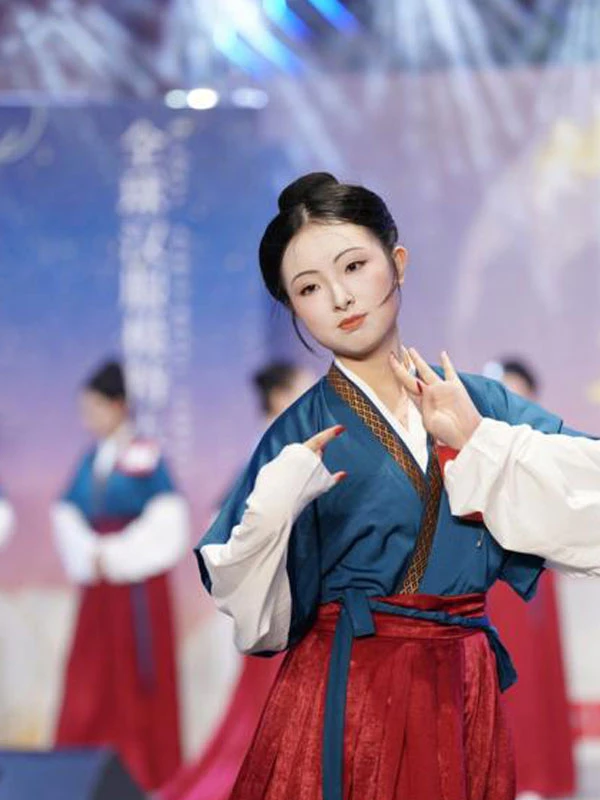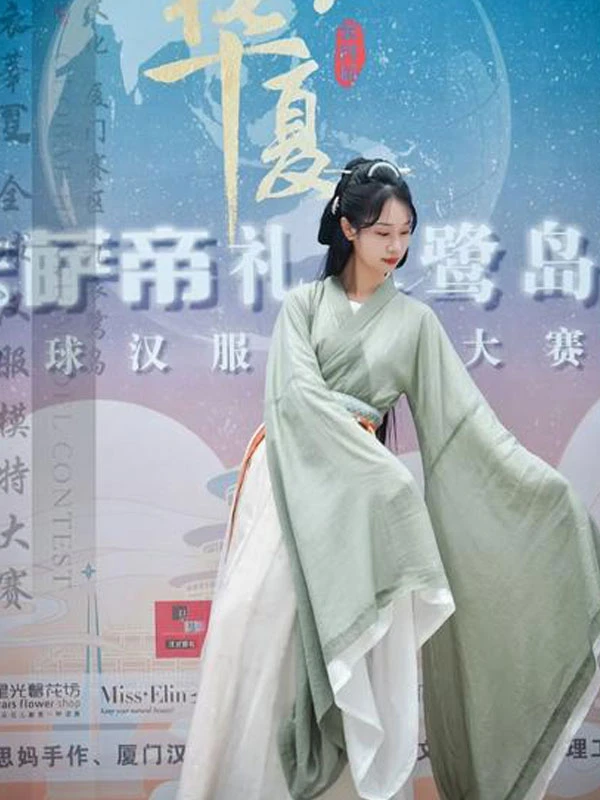Hanfu Revival: Fashion's New Frontier
In the bustling heart of Xiamen, a city known for its blend of modernity and tradition, an extraordinary event has unfolded that captures the imagination of both young and old. The Xiamen International Fashion Week, traditionally a showcase of contemporary designs, took an unexpected turn this year with the inclusion of a Hanfu modeling competition that has set the fashion world abuzz.
The "Celebrate Poetry and Wine Festival • Clothing of China Xiamen Station" event, held at the prestigious Wanyue City, wasn't just another stop on the fashion circuit. It represented a bold statement about the resurgence of traditional Chinese culture in the modern world. As models glided down the runway in meticulously crafted Hanfu – the traditional attire of the Han Chinese – onlookers were transported through centuries of Chinese history, witnessing the evolution of style from the dignified simplicity of the Han dynasty to the opulent grandeur of the Tang.
What makes this event truly remarkable is not just the beautiful clothing on display, but the way it has captured the zeitgeist of a new generation of Chinese youth. In recent years, there has been a growing movement among young Chinese to reconnect with their cultural roots, and the Hanfu revival is at the forefront of this cultural renaissance. It's not merely about wearing traditional clothes; it's about embodying the ethos and aesthetics of ancient Chinese civilization in a modern context.
The competition itself was a spectacle to behold. Contestants, ranging from seasoned models to enthusiastic amateurs, showcased not just the beauty of Hanfu but also the grace and poise that comes with wearing such historical attire. Each movement, from the sweep of a sleeve to the turn of a head, was choreographed to perfection, demonstrating that wearing Hanfu is as much about the mindset as it is about the clothing itself.
Judges, including renowned CCTV dance choreographer Li Buyange and Xiaolu Shui brand founder Lu Shui, evaluated contestants on multiple criteria. Beyond mere physical appearance, they looked for an understanding of traditional etiquette, the ability to convey the spirit of different historical periods, and the creativity to make Hanfu relevant to contemporary life.
But this event was more than just a competition. It was a celebration of Chinese culture in all its forms. The festival incorporated elements of poetry, calligraphy, and traditional music, creating a multi-sensory experience that immersed attendees in the richness of Chinese heritage. One particularly enchanting feature was the "flower girl" who, dressed in Song dynasty attire, presented contestants and attendees with lotus flowers accompanied by classical poetry, symbolizing the elegance and refinement of traditional Chinese courtship.
The inclusion of a "Qixi" or Chinese Valentine's Day theme added another layer of cultural significance to the event. Attendees participated in traditional matchmaking games, tying red strings as symbols of destined connections, a practice that dates back to ancient Chinese folklore. This blend of romance and tradition resonated deeply with the young couples in attendance, many of whom were drawn to the event as a unique way to celebrate their relationships.
What sets this Hanfu revival apart from mere cosplay or historical reenactment is its genuine integration into modern life. Designers are not content with simply recreating historical garments; they are reinterpreting them for the 21st century. Modern fabrics and manufacturing techniques are employed to make Hanfu more comfortable and practical for everyday wear, while still maintaining its essential aesthetic qualities.
Cultural Festivals: Bridging Millennia in a Day
This movement is not without its controversies. Some critics argue that the popularization of Hanfu risks oversimplifying or misrepresenting historical accuracy for the sake of marketability. Others see it as a form of soft nationalism, a way of asserting Chinese cultural identity in an increasingly globalized world. However, proponents of the Hanfu movement argue that it's a way of preserving and celebrating cultural heritage, no different from the wearing of kimonos in Japan or sarees in India.
The economic impact of this cultural resurgence cannot be ignored. The Hanfu industry has exploded in recent years, with market analysts predicting continued growth. This has led to a boom in related industries, from traditional crafts to cultural tourism. Cities like Xiamen are positioning themselves at the forefront of this trend, leveraging their historical and cultural resources to attract both domestic and international visitors.
As the sun set on the Xiamen International Fashion Week, it was clear that something profound had occurred. This wasn't just a fashion show; it was a statement about the enduring power of cultural identity in the face of rapid modernization. The success of the Hanfu competition demonstrates that there is a hunger among the Chinese people, especially the youth, for a connection to their roots.
It's clear that the Hanfu movement is more than a passing fad. It represents a reimagining of what it means to be Chinese in the modern world – a identity that honors the past while embracing the future. Events like the one in Xiamen serve as a reminder that cultural soft power can be just as influential as economic might.
The resurgence of Hanfu and traditional Chinese culture is not about turning back the clock. It's about creating a bridge between past and present, allowing people to carry the wisdom and beauty of their ancestors into a future of their own making. As the ancient Chinese proverb goes, "Consider the past, and you shall know the future." In Xiamen, for one glorious day, the past and future danced together in perfect harmony.



